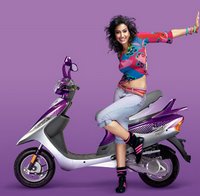Company:Jaquar & Co
Agency: Crescent Communications
Brand Count :166
 n India.
n India.Jaquar was born in 1984. The company which owns this brand started its operations in 1960 and was selling taps under the brand name Essco. Soon the owner saw the opportunity for a premium range of bath fittings and thus born the brand Jaquar.
Traditionally bath fittings and taps were low involvement products. Most of the products that were in the market where basic products and had little differentiation and devoid of any dash of aesthetics. The reason behind this was usually the bath fittings are purchased towards the end of the house construction. That leaves little money with the customer to spent. Hence the orientation was towards buying low cost basic products.
But the Indian consumers were changing.. ( cliche). The increasing disposable income together with the changing pychographics opened a window of opportunity for Jaquar. Indian consumers were traveling and was slowly getting tuned to the lifestyle in the developed nations. Bath fittings and taps were slowly recognized as products that can enhance the beauty of the home.
Jaqua
 r pioneered and rode the concept of aesthetic designer taps and fittings. The brand was built on the platform of quality ,design and aesthetics. Positioned initially as a " better tap" the brand metamorphosed to an aspirational brand with the latest tagline " Too Good to Resist".
r pioneered and rode the concept of aesthetic designer taps and fittings. The brand was built on the platform of quality ,design and aesthetics. Positioned initially as a " better tap" the brand metamorphosed to an aspirational brand with the latest tagline " Too Good to Resist".The brand has many first to its credits. The brand is the first to offer a range of bath fittings that merge with the design of the house itself. The concept of "Range" was first introduced by Jaquar. A series of products were launched as "'Collections" .The collection branded " Stealth " was the first bath fittings range in the Indian market. Jaquar communicated with the customer about the brand in a different way compared to its competitors. For the collection series, the brand talked to the consumer about the inspiration behind the collections. For example the Inspiration behind the Queens Collection was the Royals.
Jaquar was also the first brand to advertise in the electronic media. The earlier TVC of the thieves stealing the tap forgoing other valuables were memorable one and effectively reinforced the brand image a
 s an aspirational brand.
s an aspirational brand.Jaquar was clever enough to realise that Indian consumers are not price sensitive but Value sensitive. The brand was priced at a premium. But the company ensured that the product offered the value for the price customers paid. The brand is the first to offer after sales service to the customers which was unheard of for bath fittings category.
Jaquar was also promoted through a multifaceted promotion strategy involving all channel members. The effort has given results for the company . Jaguar now dominates the organised tap/bathfitting market (Rs 500 crore) with a market share of 50%. The creation of the premium bath fittings category has attracted lot of competitors to the market . Jaquar now faces competition from players like Marc and other foreign designer fittings. To stay in the leadership position, Jaquar has tied up with global majors to introduce global range of bath fitting products into the Indian market. It has tie up with the German major Hansgrohe in the shower products, the swiss major Aquis in the sensor bath accessory segment and the Swarovski crystals for the ultra premium range.
Through careful brand building Jaquar has created and virtually owned the segment of premium bath fittings market. The brand is now extending its equity into related category like electrical fittings and accessories.
source: Superbrand.org,jaquar.com,magindia.com










